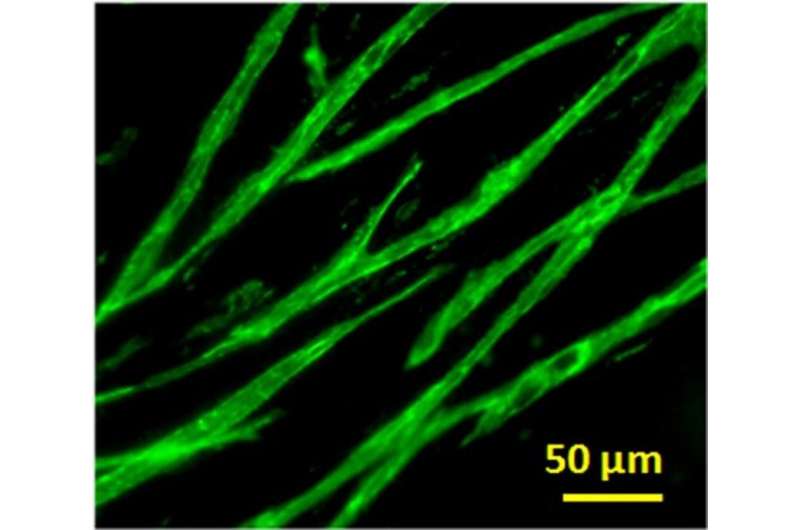Biomedical engineers design and test an improved method for healing burns

Full thickness skin grafts are the golden standard for treating burn wounds. But most skin grafts for severe burns require a donor, and for large or complicated injury sites, a full thickness skin graft is hard to come by. Split thickness skin grafts that use tissue from the patient may be a solution—but not by themselves.
By combining the graft technique with a specially engineered sheet of stem cells, researchers from Michigan Tech and the First Affiliated Hospital of Sun Yat-sen University in Guangzhou, China demonstrate an improved skin graft process. Their work, published this week in Theranostics, focuses on creating engineered tissue that maximizes a body's natural healing power.
Vascularized Tissue
Veins, arteries and capillaries move oxygen and nutrients to tissue and the lymphatic system removes waste—vascularized tissue is crosscut with many of these tiny tubes. Healing burn wounds then is not only about regrowing skin, but also about making sure these vascular systems are hooked up. The more vasculature, the more healing can happen.
Feng Zhao, an associate professor of biomedical engineering at Michigan Tech, works on creating engineered tissues that are pre-vascularized. In other words, the tissue gets a head start on the healing process. This is key when coupling the technology with split thickness skin grafts, or STSG for short.
"STSG can be used under unfavorable conditions, such as a recipient's wound having moderate infection or less vasculature, where full thickness skin grafts would fail," Zhao says. "However, STSG are more fragile than full thickness skin grafts and can contract significantly during the healing process."
To help prevent graft contraction and encourage early vascularization to improve wound repair, Zhao and her team turned to the most basic of cells.
Engineering Stem Cell Sheets
Stem cells are unique because of their potential. Unlike neurons in a brain or beta cells in a liver, stem cells lack a defining cellular purpose. In terms of healing, this means they can adapt to their surroundings; when modified to increase vascularization, they can do wonders.
The team's transplantation in a rat model showed promising results. Not only did the implantations show less contracted and puckered skin, but also less cellular inflammation and a thinner outer skin (epidermal) thickness along with more robust blood micro-circulation in the skin tissue. The combined STSG and stem cell sheet grafts also preserved features like hair follicles and sebaceous glands that secrete a lubricating oil for skin and hair.
The team attributes the success to the vascularized stem cell sheet's elevated levels of growth factors and proteins called cytokines used in healing tissue.
"The engineered stem cell sheet will overcome the limitation of current treatments for extensive and severe wounds, such as for acute burn injuries," Zhao says, "and significantly improve the quality of life for patients suffering from burns."
Next Steps
The greatest challenge is that both STSG and the stem cell sheets are fragile and difficult to harvest. Zhao says it will be crucial to improve the mechanical properties of the cell sheets and develop technology to more easily harvest them.
"We have seen excellent therapeutic effects of the vascularized stem cell sheet in healing full skin wounds. However, the underlying mechanism needs to be further elucidated," she says. "We also need to conduct large animal experiments, such as in pigs, which are closer to human physiology."
Zhao plans to build off these early promising results to do just that. The work is more than skin deep—vascularized tissue is about connection.
More information: Pre-vascularization Enhances Therapeutic Effects of Human Mesenchymal Stem Cell Sheets in Full Thickness Skin Wound Repair Theranostics 2017; 7(1):117-131. DOI: 10.7150/thno.17031



















